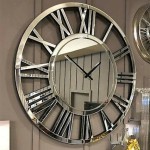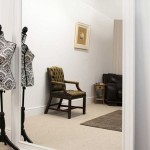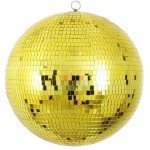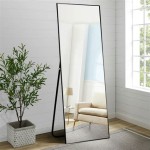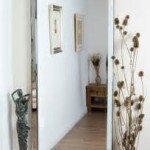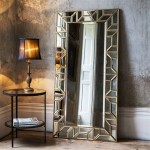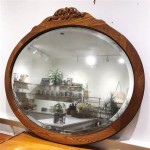Hanging a Heavy Mirror With Wire
Hanging a heavy mirror securely requires careful planning and execution. Improper installation can lead to damage to the wall, the mirror itself, and potentially injury. This article outlines the essential steps and considerations for safely hanging a heavy mirror using wire.
1. Assessing the Mirror and Wall
Before beginning, accurately assess the weight of the mirror. Bathroom scales can be used for smaller mirrors, but heavier mirrors may require specialized scales. Understanding the mirror's weight is crucial for selecting appropriate hanging hardware. Equally important is determining the wall type. Drywall differs significantly from plaster or masonry in its load-bearing capacity and requires specific fasteners.
Locating wall studs is critical, especially for heavier mirrors. A stud finder can readily identify these structural supports. Marking their locations helps ensure the chosen hanging hardware is securely fastened to the framing of the wall, providing maximum support.
2. Choosing the Right Hardware
The weight of the mirror dictates the type of hanging hardware required. D-rings and wire are a common and effective method for many mirrors. For exceptionally heavy mirrors, however, using two D-rings and a heavy-duty wire is recommended. The weight rating of both the D-rings and the wire should significantly exceed the actual weight of the mirror for a safety margin.
Selecting the appropriate fasteners for the wall is equally important. For drywall, heavy-duty wall anchors specifically designed for hanging heavy objects are necessary. These anchors distribute the weight over a larger area, reducing stress on the drywall. For plaster or masonry walls, heavy-duty screws or bolts designed for the specific wall material are required.
3. Installing D-Rings
Accurate placement of the D-rings is essential for balance and stability. Measure and mark the desired locations on the back of the mirror, ensuring they are equidistant from the center and level with each other. The placement should also take into consideration the desired hanging height and the position of the wire. Carefully attach the D-rings according to the manufacturer’s instructions, using appropriate screws for the mirror’s frame material.
4. Attaching the Wire
Cut a length of picture hanging wire significantly longer than the width of the mirror. This allows ample length for wrapping and securing the wire around the D-rings. Thread the wire through each D-ring, creating a double strand. Wrap the short end of the wire tightly around the longer strand several times, creating a secure loop. Repeat this process on the other D-ring, ensuring the wire is taut and the mirror hangs level.
The wire should create a slight inverted "V" shape when the mirror is hung. This helps distribute the weight evenly and reduces stress on the wire and the hanging hardware.
5. Locating and Marking Wall Studs
Using a stud finder, locate and mark the position of the wall studs where the mirror will be hung. Ensure the marked locations align with the desired position of the mirror. If hanging hardware cannot be attached directly to studs, ensure appropriate wall anchors are used, rated for the weight of the mirror. Marking the planned location of the fasteners on the wall ensures accuracy during installation.
6. Hanging the Mirror
Once the wall studs are marked, use a level to ensure the hanging hardware will be aligned correctly. Predrill pilot holes at the marked locations to prevent the wall material from splitting, especially in the case of drywall. This is particularly important when using screws for heavier mirrors.
Attach the chosen hanging hardware — picture hooks, heavy-duty screws, or other appropriate fasteners — securely to the wall. Carefully lift the mirror and hang it on the installed hardware. Once hung, check again for levelness using a level and adjust if necessary. Ensure the mirror is flush against the wall and that the wire is not visible from the front.
7. Safety Precautions
Throughout the entire process, prioritize safety. Wear appropriate eye protection when drilling and handling hardware. Use gloves to protect hands from sharp edges and materials. For exceptionally large or heavy mirrors, enlist the assistance of another person to ensure safe handling and installation. After hanging, periodically inspect the hanging hardware and wire for signs of wear or loosening. If any issues are observed, address them promptly to prevent potential accidents or damage.

How To Hang A Mirror With Wire Pictures Wikihow Picture Hanging Heavy
How To Hang A 100 Pound Mirror On Drywall Quora

How To Hang A Heavy Mirror With Pictures Wikihow

Beam Picture Mirror Hanging Wire Hook Set No Nails Damage

How To Hang A Mirror With Wire Pictures Wikihow

Picture Wire Strung Between Two D Rings Attached To The Back Of A Frame Hanging Mirror Heavy

How To Hang A Heavy Mirror The Home Depot

How To Hang A Heavy Mirror On Brick Fireplace Drill Into Dans Le Lakehouse

How To Install Wire On Back Of Mirror

How To Hang A Mirror With Wire Pictures Wikihow

